How to Choose Quality THCA Concentrates: What to Look For
The cannabis concentrate market has exploded in recent years, with THCA concentrates becoming increasingly popular among both medical patients and recreational users. However, with this growth comes a critical challenge: distinguishing high-quality products from inferior or potentially dangerous ones. When it comes to concentrates, quality isn't just about getting the best experience—it's fundamentally about your safety and health.
Unlike flower, where visual inspection can tell you quite a bit about what you're getting, concentrates require a more sophisticated approach to quality assessment. These products represent highly processed, concentrated forms of cannabis compounds, which means any impurities, contaminants, or processing errors become concentrated as well. A quality THCA concentrate should offer purity, potency, and peace of mind—but how do you know what you're really getting?
This comprehensive guide will walk you through every aspect of selecting premium THCA concentrates. We'll explore the critical importance of lab testing, teach you how to read Certificates of Analysis, identify visual quality indicators, understand texture and consistency, evaluate terpene profiles, assess packaging standards, and recognize red flags that should send you running. By the end, you'll have the knowledge to make informed decisions and ensure that every concentrate you purchase meets the highest safety and quality standards.
Why does quality matter more with concentrates than with other cannabis products? The answer is simple: concentration amplifies everything—both the good and the bad. When THCA and other cannabinoids are extracted and concentrated, so are any pesticides, heavy metals, residual solvents, or microbial contaminants that might be present. This is why understanding concentrate quality indicators isn't just about preference—it's about protecting your health.
Lab Testing and Certificates of Analysis: Your Most Important Tool
Understanding the COA
A Certificate of Analysis, commonly referred to as a COA certificate of analysis, is your window into what's really in your concentrate. This document, generated by a third-party testing laboratory, provides detailed information about the chemical composition of the product you're considering. Think of it as a report card that tells you everything from potency levels to the presence (or hopefully absence) of harmful contaminants.
Every reputable concentrate should come with an accessible COA. If a brand or dispensary can't or won't provide one, that's an immediate red flag. The COA should be specific to the exact batch you're purchasing, not a generic test result from a different batch or product. Look for batch numbers or production dates that match your product's labeling.
How to Read Lab Results
Reading a COA might seem intimidating at first, but once you understand the key sections, it becomes second nature. A comprehensive lab report for lab tested cannabis concentrates should include several critical tests:
Potency Testing: Understanding THCA Percentage
The potency panel tells you the concentration of various cannabinoids in your product. For THCA concentrates, you're primarily looking at the THCA percentage, which typically ranges from 70% to 99% in quality products. However, higher isn't always better—what matters is accuracy and consistency with what's advertised.
THCA purity is crucial, but you should also look at the total cannabinoid profile. A good concentrate might show trace amounts of other cannabinoids like CBD, CBG, or CBN, which contribute to the entourage effect. If a product claims to be 99% THCA but the lab results show 85%, that's a significant discrepancy that speaks to either dishonest marketing or poor quality control.
Terpene Profiles: The Flavor and Effect Indicators
Terpenes are the aromatic compounds that give cannabis its distinctive smell and contribute significantly to its effects. A quality THCA concentrate should preserve significant terpene content, typically ranging from 2% to 15% depending on the extraction method and product type.
Look for a detailed breakdown of individual terpenes like myrcene, limonene, caryophyllene, and pinene. The presence of diverse terpenes indicates proper extraction techniques that preserved these delicate compounds. If the terpene section is blank or shows suspiciously low levels (under 1%), the product has likely been over-processed or poorly stored.
Critical Safety Tests: What You Must Check
Residual Solvent Testing: Non-Negotiable
This might be the most critical test for your health. Many extraction methods use solvents like butane, propane, ethanol, or CO2. While these solvents are typically purged during processing, improper techniques can leave dangerous residuals behind. Contaminant testing for solvents is absolutely essential.
Safe residual solvent levels are measured in parts per million (ppm). Different solvents have different safety thresholds, but reputable products should show non-detectable (ND) levels or amounts well below regulatory limits. For example, butane should be below 5,000 ppm, while more toxic solvents like benzene should be undetectable. Never purchase a concentrate without verified solvent testing.
Pesticide Screening: Protecting Your Lungs
Pesticides used during cultivation become highly concentrated in extracted products. A comprehensive cannabis testing panel should screen for dozens of common pesticides. Every single pesticide should return as ND (non-detected) or below action levels.
Pay special attention to pesticides known to be particularly harmful when inhaled, such as myclobutanil, which converts to hydrogen cyanide when heated. If any pesticide shows up above acceptable limits, avoid that product entirely. Your lungs deserve better.
Heavy Metals Testing: The Hidden Danger
Cannabis plants are bioaccumulators, meaning they absorb whatever is in their growing medium—including heavy metals like lead, arsenic, cadmium, and mercury. These metals don't break down and can accumulate in your body over time, causing serious health issues.
A quality COA will test for at least the "big four" heavy metals. All should return as non-detected or well below regulatory thresholds. If heavy metals are present in measurable amounts, it indicates either contaminated source material or improper cultivation practices.
Microbial Contamination: Bacteria, Mold, and Yeast
Microbial testing checks for harmful bacteria (like E. coli and Salmonella), mold, yeast, and fungus. While some microbial presence is natural in plant material, concentrates should show very low to zero counts, as heating during extraction typically kills most microorganisms.
However, post-extraction contamination can occur through poor handling or packaging. Total yeast and mold counts should be minimal, and pathogenic bacteria should be completely absent. High microbial counts indicate unsanitary processing conditions.
Moisture Content and Water Activity
While less critical than other tests, moisture content affects product stability and shelf life. Concentrates should have very low moisture content (typically under 5%). High moisture can promote microbial growth and degradation. Water activity should be below 0.65 to prevent bacterial growth and below 0.70 to prevent yeast and mold.
Red Flags in Lab Results
Knowing what to look for is just as important as knowing what to avoid. Here are warning signs that should make you reconsider a purchase:
- Missing tests: Any major category absent from the COA suggests inadequate testing
- Expired test dates: Results older than 6 months may not reflect current product quality
- Results that seem too good to be true: 99% purity with zero contaminants across the board might indicate selective testing
- Inconsistent batch information: Batch numbers that don't match the product
- Unlicensed labs: Testing should come from ISO-certified, state-licensed facilities
- Vague or unclear results: Professional labs provide clear, specific data
Verifying Lab Authenticity
Unfortunately, fake COAs exist. Unscrupulous producers sometimes create fraudulent lab reports or use outdated results. Protect yourself by:
- Scanning QR codes that link directly to the lab's database
- Verifying batch numbers match between product and COA
- Contacting the testing laboratory directly to confirm results
- Checking that the lab is licensed and accredited in your state
- Looking for ISO/IEC 17025 accreditation, which indicates laboratory competence
Many reputable brands now use blockchain technology or direct database links that allow instant verification of test results. If a company makes verification difficult or impossible, that's a red flag.
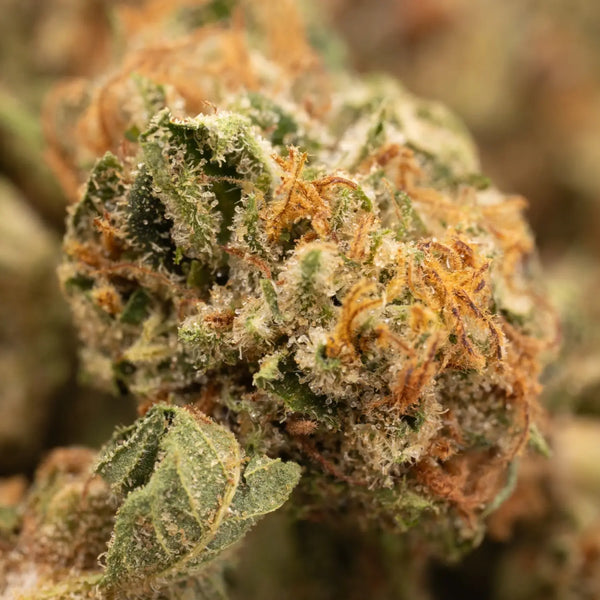
Visual Quality Indicators: What Your Eyes Can Tell You
While lab testing is the gold standard for quality assessment, visual inspection remains a valuable tool for evaluating quality THCA concentrates. Experienced consumers can often identify potential issues before even looking at a COA.
Color: The First Indicator
Color tells you a lot about purity, processing methods, and freshness. Premium THCA concentrates typically display colors ranging from light amber to translucent golden, depending on the extraction method and starting material.
What Good Color Looks Like:
- Clear, translucent golden to light amber
- Consistent coloring throughout
- Slight color variations are normal between different strains
- Diamonds should be crystal clear or slightly cloudy white
- Live resin can be slightly darker while still being high quality
Warning Signs:
- Dark brown or black coloring suggests over-processing, improper purging, or degraded material
- Greenish tints indicate plant material or chlorophyll contamination
- Uneven coloring or dark spots might signal impurities
- Gray or off-white appearance could indicate mold or contamination
Clarity: Transparency Matters
Concentrate color clarity is particularly important for certain types of concentrates. Most high-quality extracts should be relatively clear, allowing you to see through them when held up to light.
Clarity Standards by Type:
Diamonds: These should be exceptionally clear, like glass or quartz crystals. Cloudiness in THCA diamonds suggests impurities or incomplete crystallization. High-quality diamonds might catch and refract light beautifully, similar to actual gemstones.
Sauce: While sauce contains both crystalline THCA and liquid terpenes, the liquid portion should be clear and golden. The overall appearance should be glossy and vibrant, not muddy or opaque.
Shatter: True to its name, quality shatter should be glass-clear or slightly amber-tinted. You should be able to see through it when held to light. Cloudiness indicates improper purging or contamination.
Badder/Budder: While these are opaque by nature due to their whipped consistency, the color should still be uniform and bright. Quality badder has a creamy, butter-like appearance without dark spots or discoloration.
Sugar Wax: The crystalline structure should be consistent throughout, with a sandy or sugar-like appearance. Coloring should be uniform and light.
Consistency: Type-Dependent Expectations
Different concentrate types have distinct consistencies, and understanding what's normal for each helps identify quality issues:
Diamonds: Should be hard, crystalline structures. They might range from small crystalline formations to large, well-formed diamonds. They shouldn't crumble to powder easily or appear waxy.
Sauce: Should have a wet, sauce-like consistency with visible THCA crystals suspended in liquid terpenes. The liquid should flow slightly, and the crystals should be distinct.
Badder: Should be creamy and uniform, similar to cake batter or peanut butter. It should be easy to manipulate with a dab tool without being too sticky or too dry.
Shatter: Should be brittle and glass-like, breaking cleanly when snapped. It might be more pliable when warm but shouldn't be gooey or sticky at room temperature.
Crumble: Should have a dry, crumbly texture that breaks apart easily but doesn't turn to dust. It should maintain its structure without being overly moist.
Warning Signs to Watch For
- Plant material: Visible plant debris indicates poor filtration and lower quality
- Strange particulates: Any foreign objects or unusual particles are unacceptable
- Separation issues: Excessive separation of components might indicate improper formulation
- Bubbling: Excessive bubbles can indicate residual solvents
- Discoloration: Dark spots, white patches, or color inconsistencies
- Mold: White fuzzy growth (distinct from THCA crystals) is dangerous mold
Texture and Consistency: The Touch Test
Physical properties tell you about extraction quality, storage conditions, and product stability. Understanding proper texture for different concentrate types helps identify both quality products and potential problems.
What Different Textures Indicate
The texture of a concentrate is largely determined by its molecular structure, which is influenced by extraction method, post-processing techniques, and storage conditions.
Crystalline/Granular Textures (Diamonds, Sugar): These form when THCA molecules organize into crystal structures. Large, well-formed crystals indicate patient, controlled crystallization—a mark of quality production. Smaller, more uniform crystals (sugar consistency) result from mechanical agitation during crystallization.
Smooth/Creamy Textures (Badder, Budder): Created through whipping or stirring during the purging process, which introduces air and creates a smooth, homogeneous consistency. Quality badder should be easy to work with—not too sticky or too dry.
Glass-like Textures (Shatter): Result from rapid cooling and minimal agitation, creating an amorphous molecular structure. The brittleness indicates complete purging and proper molecular alignment.
Wet/Sauce-like Textures (Sauce, Terp Sauce): High terpene content creates a liquid or semi-liquid consistency. The wetness is actually a positive indicator of terpene preservation, not a quality defect.
Proper Consistency for Each Type
Understanding baseline expectations helps you identify when something is off:
Diamonds: At room temperature, should be hard and crystal-like. They might have slight variations in size and clarity, but overall structure should be consistent. When dabbed, they should vaporize cleanly without leaving significant residue.
Sauce: Should be pourable or very soft at room temperature. The crystal-to-sauce ratio varies, but quality sauce should never be completely dry or completely liquid. The terpene-rich sauce should coat the crystals beautifully.
Badder: Should maintain its shape but be easily scooped with a dab tool. It shouldn't drip or run at room temperature, but also shouldn't require significant force to manipulate. Temperature affects consistency—cold badder will be firmer, warm badder more pliable.
Shatter: Should snap or shatter when cold but might become more taffy-like when warm. This temperature sensitivity is normal. However, if shatter is always gooey or sticky, it might indicate incomplete purging.
Crumble: Should easily break into pieces but maintain structural integrity. It shouldn't be powdery or dusty, nor should it be wet or sticky. Good crumble is easy to handle and dose accurately.
How Handling Affects Quality Assessment
Temperature dramatically impacts concentrate consistency. What might seem like a quality issue could simply be temperature variation:
- Cold concentrates become harder, more brittle, and less aromatic
- Warm concentrates become softer, more pliable, and more fragrant
- Some texture change with temperature is normal and expected
- Store concentrates in cool, dark places to maintain optimal consistency
When assessing quality, handle concentrates at room temperature (65-75°F) for the most accurate evaluation.
What "Sugaring Up" Means
You might notice that some concentrates, particularly shatter, develop a crystalline or "sugared" appearance over time. This process, called "sugaring up," occurs when THCA molecules begin to crystallize.
Is sugaring good or bad? It depends on your perspective:
- It's not a sign of contamination or quality degradation
- It indicates high THCA purity (higher purity sugars up more easily)
- Some consumers prefer the sugared texture for easier handling
- Others prefer the original texture and see sugaring as undesirable change
- Sugaring doesn't affect potency or safety, only texture
When Texture Changes Are Concerning
While some texture changes are normal, others indicate problems:
Normal Changes:
- Sugaring up over time
- Slight consistency changes with temperature
- Minor separation in sauce (crystals settling)
- Color darkening slightly with age
Concerning Changes:
- Sudden complete liquefaction (suggests contamination)
- Development of unusual odors
- Color shift to very dark brown or black
- Appearance of white fuzzy growth (mold)
- Extreme dryness or brittleness in products that should be moist
- Excessive stickiness in products that should be dry
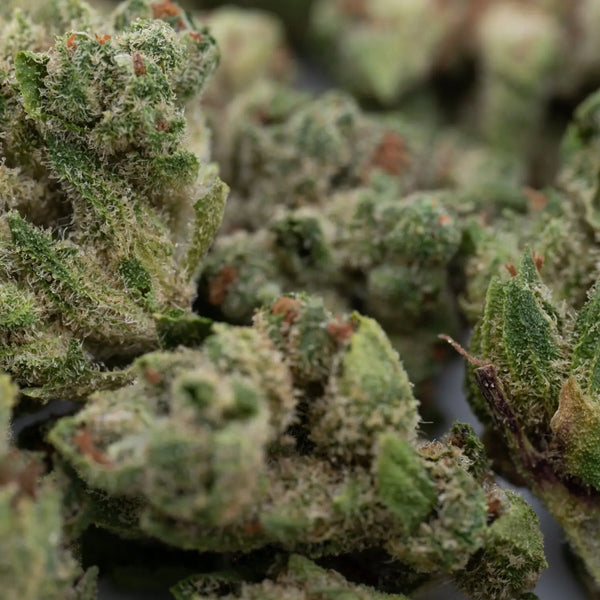
Smell and Terpene Profile: Using Your Nose
Your nose is a powerful quality assessment tool. The aroma of a concentrate tells you about terpene preservation, freshness, and potential contamination. A quality THCA concentrate should have a pronounced, pleasant aroma that reflects its strain lineage.
The Importance of Pronounced Aroma
Terpenes are delicate, volatile compounds that can easily be destroyed by excessive heat, oxygen exposure, or time. A strong, pleasant aroma indicates:
- Proper extraction techniques that preserved terpenes
- Appropriate storage conditions
- Product freshness
- Authentic strain characteristics
Concentrates with minimal or no aroma might be:
- Over-processed or over-purged
- Improperly stored, allowing terpene evaporation
- Old or degraded
- Made from low-quality or old starting material
Strain-Specific Terpenes
Different cannabis strains have unique terpene profiles that create distinct aromas and effects:
Myrcene: Earthy, musky, herbal notes; common in indica-dominant strains Limonene: Citrus, lemon aromas; associated with uplifting effects Caryophyllene: Spicy, peppery notes; the only terpene that acts on cannabinoid receptors Pinene: Pine, woodsy aromas; associated with alertness and memory Linalool: Floral, lavender notes; known for calming effects Humulene: Hoppy, earthy aromas; appetite-suppressant properties
Quality concentrates should smell like their source strain. If you're familiar with a particular strain's flower, the concentrate should have an even more intense version of that same aroma profile.
Fresh vs. Old Smell
Fresh concentrates have vibrant, pronounced aromas. As concentrates age, terpenes evaporate and degrade, leading to:
- Muted, less pronounced aromas
- Loss of strain-specific notes
- Development of "hay-like" or grass smells
- Flat, one-dimensional scent profiles
While aged concentrates aren't necessarily dangerous, they offer diminished flavor and potentially altered effects. The terpene degradation represents a loss of product quality and value.
Chemical Odors as Red Flags
Perhaps most importantly, your nose can detect potentially dangerous contaminants. Be immediately suspicious of:
Solvent Odors: Gasoline, acetone, lighter fluid, or nail polish remover smells indicate residual solvents. This is a serious safety concern and the product should not be consumed.
Sulfur or Rotten Eggs: These unusual odors might indicate contamination or improper storage conditions.
Perfume or Artificial Scents: Some unscrupulous producers add artificial terpenes or flavorings. While not necessarily dangerous, this practice is deceptive and suggests other corners might be cut.
Mildew or Musty Odors: These smells suggest mold or microbial contamination in the source material.
Burnt or Harsh Chemical Smells: Could indicate over-processing, excessive heat during extraction, or contamination.
Terpene Preservation Indicators
High-quality concentrates use extraction and processing methods that preserve terpenes:
- Live resin is made from fresh-frozen plant material, preserving maximum terpenes
- Live rosin uses fresh-frozen material and solventless extraction
- Cured resin uses dried material but can still preserve significant terpenes with proper technique
- Distillates often have terpenes removed during processing, then reintroduced
When evaluating aroma, consider the product type. Distillates naturally have less pronounced aromas unless terpenes are reintroduced. However, products like live resin or sauce should be exceptionally aromatic.
Why Smell Matters for Effects
The entourage effect—the synergistic interaction between cannabinoids and terpenes—means that aroma isn't just about flavor. Terpenes contribute significantly to the overall effects of the concentrate:
- Myrcene enhances THC absorption and promotes relaxation
- Limonene elevates mood and reduces stress
- Caryophyllene provides anti-inflammatory effects
- Pinene promotes alertness and counteracts some THC effects
A concentrate with minimal terpenes may still be potent (high THCA), but the experience will be less nuanced and potentially less therapeutic. For the full spectrum of cannabis benefits, terpene preservation is essential.
Packaging Quality: The Container Matters
Professional packaging isn't just about aesthetics—it's about product preservation and consumer safety. Best THCA brands invest in proper packaging because they understand it's essential for maintaining quality.
Proper Containers
Glass: Medical-grade glass containers are ideal for concentrates. Glass is non-reactive, doesn't leach chemicals, and protects against light when properly colored (amber or dark green). It allows visual inspection while maintaining product integrity.
Medical-Grade Silicone: Platinum-cured silicone containers are acceptable for short-term storage. They're non-stick and easy to work with, but less protective than glass for long-term storage. Look for food-grade or medical-grade silicone, never cheap alternatives.
Avoid: Plastic containers (except for short-term transport), parchment paper alone (allows air exposure), non-food-grade materials, or containers without proper seals.
Essential Packaging Features
Airtight Seals: Oxygen degrades both cannabinoids and terpenes. Quality packaging includes proper seals that prevent air infiltration. Look for jars with rubber gaskets or quality screw-top seals.
Light Protection: UV light degrades cannabinoids and terpenes rapidly. Quality packaging uses amber or opaque containers, or comes in secondary light-protective packaging.
Tamper-Evident Features: Licensed products should include tamper-evident seals, stickers, or bands that show if the product has been opened before purchase. This protects consumers and ensures product authenticity.
Labeling Requirements
Professional packaging includes comprehensive labeling that meets regulatory requirements:
Essential Label Information:
- Product name and type
- Cannabinoid content (THCA percentage)
- Net weight
- Batch/lot number
- Manufacturing date
- Best-by or expiration date
- Company name and license number
- Warning labels (keep away from children, etc.)
- QR code or link to COA
- Storage instructions
Missing Information Warnings: If any of these elements are missing, reconsider your purchase. Professional, licensed producers include all required information because they're operating legally and transparently.
Storage Information
Quality brands provide storage recommendations to help consumers maintain product quality:
- Store in cool, dark place
- Keep sealed when not in use
- Refrigeration requirements (if applicable)
- Shelf life information
- Optimal temperature range
Professional vs. Amateur Packaging
The difference between professional and amateur packaging is usually obvious:
Professional Packaging:
- Consistent, high-quality materials
- Complete, clear labeling
- Tamper-evident features
- Branded with licensed company information
- Proper seals and closures
- No handwritten elements (except batch dating by some artisan producers)
Amateur/Suspicious Packaging:
- Inconsistent or low-quality materials
- Missing or incomplete labels
- No tamper-evident features
- Generic or absent branding
- Poor seals or closures
- Excessive handwritten information
- No license numbers or contact information
Professional packaging reflects a professional operation that likely maintains high standards throughout production, from cultivation to final product.
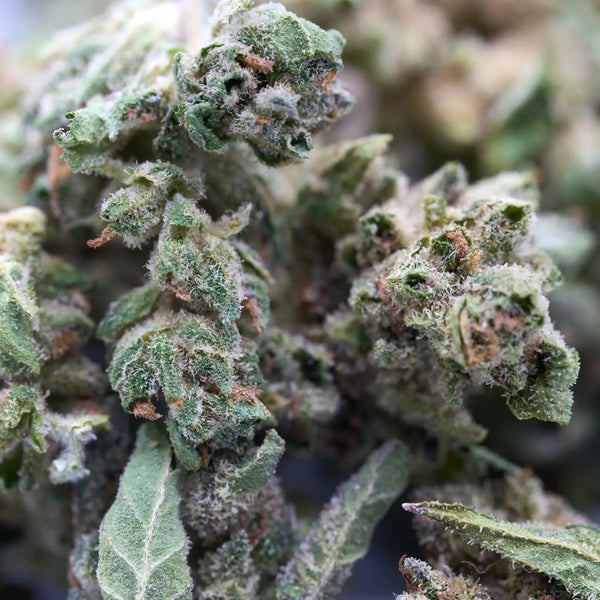
Source and Brand Reputation: Know Your Supplier
Where you purchase your concentrates matters as much as the product itself. Sourcing from reputable brands and licensed dispensaries ensures you're getting legitimate, tested products rather than potentially dangerous black market alternatives.
Licensed Dispensaries vs. Gray Market
Licensed Dispensaries:
- Required to sell tested products
- Subject to regulatory oversight
- Products have verifiable COAs
- Traceable supply chains
- Legal recourse if issues arise
- Products meet state safety standards
Gray/Black Market:
- No testing requirements or oversight
- Unknown product contents
- Fake or absent COAs
- Untraceable origins
- No legal protections
- Potentially dangerous contaminants
The price difference between licensed and unlicensed products exists largely because legal producers must meet expensive testing, safety, and regulatory requirements. While gray market products might seem cheaper, they put your health at risk and support illegal operations.
Researching Brands
Before purchasing from any brand, invest time in research:
Check Online Presence:
- Professional website with company information
- Active social media with customer engagement
- Detailed product information and testing results
- Company history and transparency about operations
Look for Industry Recognition:
- Awards from legitimate cannabis competitions
- Positive coverage in industry publications
- Partnerships with reputable testing laboratories
- Membership in industry trade organizations
Verify Licensing:
- State-issued license numbers on packaging
- Verify licenses through state regulatory databases
- Confirm licenses are current and valid
- Check for any violations or compliance issues
Customer Reviews: Reading Between the Lines
Customer reviews provide valuable insights, but read them critically:
Good Signs:
- Consistent positive feedback about quality
- Specific comments about effects, flavor, and appearance
- Photos of actual products
- Responses from the company to both positive and negative reviews
- Reviews across multiple platforms
Red Flags:
- Only extremely positive reviews (might be fake)
- Vague, generic praise without details
- Similar writing style across multiple reviews
- Recent influx of positive reviews after negative feedback
- Company doesn't respond to concerns
Look for reviews on independent platforms, not just the company's website. Reddit, cannabis forums, and Google reviews often provide more authentic consumer experiences.
Extraction Method Transparency
Reputable brands are transparent about their extraction methods:
Common Safe Methods:
- CO2 extraction (supercritical or subcritical)
- Hydrocarbon extraction (butane, propane)
- Ethanol extraction
- Solventless methods (rosin, ice water hash)
Each method has advantages and disadvantages, but what matters most is that the company:
- Discloses their method
- Properly purges solvents (if applicable)
- Tests final products thoroughly
- Uses appropriate equipment and expertise
Be wary of brands that are secretive or vague about their extraction processes. Transparency indicates confidence in quality and safety standards.
Source Material Quality
The quality of the final concentrate is directly related to the quality of the starting material:
Questions to Ask:
- Where is the cannabis grown?
- Indoor, greenhouse, or outdoor cultivation?
- What growing practices are used (organic, sustainable, etc.)?
- Is the source material fresh or cured?
- What strains or genetics are used?
Premium brands often work with specific cultivators or maintain their own growing operations to ensure consistent, high-quality source material. They should be able to provide detailed information about their supply chain.
Company Testing Standards
Beyond the minimum required testing, quality-focused brands often:
- Test more frequently than required
- Test for additional contaminants
- Use multiple testing laboratories for verification
- Make testing results easily accessible
- Provide detailed information beyond basic potency
Companies that view testing as a marketing advantage rather than just a regulatory requirement are more likely to produce consistently safe, high-quality products.
Warning Signs of Unreliable Sources
Be cautious of brands or sellers that:
- Can't or won't provide COAs
- Have inconsistent product quality
- Make unverifiable health claims
- Lack proper licensing or operate in legal gray areas
- Have no verifiable company information
- Offer prices significantly below market rates
- Use aggressive or deceptive marketing
- Have patterns of customer complaints
- Resist questions about their practices
Your health is too important to risk on questionable sources. Stick with established, reputable brands even if they cost slightly more.
Price as a Quality Indicator
While expensive doesn't always mean better, price can be a useful quality indicator in the concentrate market. Understanding reasonable price ranges helps you identify both overpriced products and suspiciously cheap ones that might compromise your safety.
Reasonable Price Ranges
Prices vary significantly by region, product type, and market conditions, but general ranges exist:
Budget Tier ($15-30/gram):
- Adequate quality for occasional use
- Basic testing standards
- May lack complex terpene profiles
- Acceptable safety if properly tested
Mid-Tier ($30-50/gram):
- Good quality with robust testing
- Better terpene preservation
- More refined extraction techniques
- Sweet spot for regular consumers
Premium Tier ($50-80+/gram):
- Exceptional quality and purity
- Maximum terpene preservation
- Artisan or small-batch production
- Unique strains or limited releases
These ranges apply to licensed, legal markets. Prices in emerging or restricted markets may be higher due to limited supply.
Too Cheap = Red Flags
Concentrates selling for significantly below market rates should raise immediate concerns. Quality extraction is expensive due to:
- Equipment costs (extraction machines, purging ovens, vacuum chambers)
- Skilled labor requirements
- Source material costs (quality cannabis isn't cheap)
- Testing expenses ($200-500 per batch)
- Licensing and compliance costs
- Proper facility requirements
If a concentrate is priced dramatically lower than competitors, ask why. Possible reasons include:
- Skipped testing
- Low-quality source material
- Improper extraction techniques
- Unlicensed production
- Improperly purged solvents
- Contaminated or remediated material
- Expired or degraded products
The saying "you get what you pay for" definitely applies to cannabis concentrates. Cutting corners on production costs often means compromising safety or quality.
Why Quality Costs More
Understanding production costs helps justify premium pricing:
Source Material: Quality concentrates start with quality cannabis. Premium flower costs more, but makes better concentrates. A pound of trim might cost $100-200, while premium flower costs $1,000-3,000 or more.
Extraction Efficiency: It typically takes 4-6 grams of quality flower to produce 1 gram of concentrate. Do the math—if flower costs $10/gram, the source material alone for 1 gram of concentrate is $40-60.
Testing: Comprehensive testing costs $200-500 per batch. Divide that by the number of units produced, and each gram carries $2-5 in testing costs alone.
Equipment and Facility: Professional extraction equipment costs tens to hundreds of thousands of dollars. Proper facilities require ventilation, safety systems, and climate control. These costs are amortized across products.
Labor and Expertise: Skilled extraction technicians command good salaries. Proper extraction requires time, expertise, and careful attention to detail.
Compliance and Licensing: Legal operations pay for licenses, compliance staff, lawyers, and adherence to complex regulations. These costs are built into product pricing.
Value vs. Premium Pricing
There's a difference between value pricing and premium pricing. Value brands offer solid quality at reasonable prices by:
- Operating efficiently
- Maintaining consistent but not exotic strains
- Using automated processes where appropriate
- Focusing on core products rather than extensive variety
Premium brands command higher prices through:
- Exotic or rare strains
- Small-batch, artisan production
- Maximum terpene preservation (live resin, live rosin)
- Exceptional purity levels
- Luxury packaging and branding
- Limited availability
Both approaches can offer quality products. Choose based on your priorities, budget, and how much the additional refinements matter to you.
When to Invest More
Consider spending more on concentrates when:
- You consume regularly (better value per use)
- You have specific medical needs
- You're sensitive to contaminants or low-quality products
- You want maximum terpene preservation and flavor
- You're seeking specific rare strains
- You value supporting ethical, sustainable brands
For occasional use or experimentation, mid-tier products from reputable brands offer the best balance of quality and value.
Red Flags to Avoid: Protecting Yourself
Knowing what to avoid is just as important as knowing what to look for. Here's a comprehensive list of warning signs that should make you reconsider a purchase:
No Lab Testing Available
This is the single biggest red flag. Any concentrate sold without accessible, verified lab testing should be avoided entirely. Excuses like "testing is too expensive" or "our product is clean, we don't need testing" are unacceptable. Testing is the only way to verify safety and potency.
Suspiciously Low Prices
As discussed, prices significantly below market rates suggest corners are being cut somewhere—usually in ways that compromise your safety. If a deal seems too good to be true, it probably is.
Dark or Cloudy Appearance
While some darkness is acceptable in certain product types (like darker live resins), excessively dark concentrates that should be light colored indicate:
- Poor starting material
- Improper extraction or purging
- Degradation or oxidation
- Contamination with plant material
Cloudiness in products that should be clear (like diamonds or shatter) suggests impurities or contamination.
Chemical Smells
Any concentrate that smells like:
- Gasoline or lighter fluid
- Acetone or nail polish remover
- Sulfur or rotten eggs
- Strong artificial fragrances
- Harsh chemical odors
Should be avoided. These smells indicate residual solvents, contamination, or the addition of unsafe substances.
Unprofessional Packaging
Products in generic bags, unmarked containers, or packaging with incomplete labels should raise concerns. Professional products require professional packaging. Handwritten labels (except for batch dating by some artisan producers) are particularly concerning.
Vague Sourcing Information
Brands that won't or can't tell you:
- Where their cannabis is grown
- What extraction methods they use
- Which lab tests their products
- Where they're licensed to operate
Are hiding something. Transparency is a hallmark of quality brands.
Health Claims on Packaging
Legal, licensed cannabis products cannot make specific health or medical claims on packaging. Products claiming to "cure" diseases, "treat" specific conditions, or providing medical advice are either unlicensed or operating illegally. This extends to safety as well—legitimate products carry appropriate warnings, not unverifiable health claims.
Missing Safety Information
Products should include:
- "Keep out of reach of children" warnings
- Age restriction information
- Guidance on responsible use
- Storage recommendations
- Potential side effects or warnings
Missing safety information indicates either unlicensed production or a disregard for consumer safety.
Inconsistent Products
If a brand's products vary dramatically in quality, color, consistency, or effects between batches, it indicates:
- Poor quality control
- Inconsistent source material
- Improper production processes
- Potential contamination issues
Quality brands maintain consistency through rigorous quality control and testing.
No Verifiable Company Information
Legitimate brands have:
- Physical business addresses
- Contact information (phone, email)
- Licensed operation numbers
- Ownership or management information
- Active customer service
Anonymous brands with no way to contact them or verify their legitimacy are massive red flags.
Fake or Suspicious COAs
Be aware that fake Certificates of Analysis exist. Red flags include:
- COAs without lab contact information
- Results that seem too perfect
- QR codes that don't link to lab databases
- Batch numbers that don't match products
- Unlicensed or unverifiable laboratories
- Photocopied or low-quality images of COAs
Always verify COA authenticity through the laboratory directly.
Conclusion: Your Guide to Safe, Quality Concentrates
Choosing a quality THCA concentrate requires attention to multiple factors, but the effort is worth it. By following the guidelines in this comprehensive guide, you can confidently select products that are safe, potent, and deliver the experience you're seeking.
Let's recap the key quality checkers:
- Lab Testing is Non-Negotiable: Always verify that products have comprehensive, current COAs from licensed laboratories covering potency, terpenes, residual solvents, pesticides, heavy metals, and microbial contamination.
- Visual Inspection Matters: Look for appropriate color (light amber to golden), clarity (clear, not cloudy), and consistency (proper texture for product type).
- Trust Your Nose: Quality concentrates have pronounced, pleasant aromas. Chemical smells are immediate disqualifiers.
- Packaging Indicates Professionalism: Proper containers, complete labeling, tamper-evident features, and professional presentation reflect quality operations.
- Research Your Sources: Purchase from licensed dispensaries and reputable brands with transparent operations and positive reputations.
- Price Reflects Quality: While expensive isn't always better, suspiciously cheap products often compromise safety or quality.
- Watch for Red Flags: No testing, dark appearance, chemical smells, unprofessional packaging, and vague sourcing should send you elsewhere.
Safety First, Always
Your health and safety must be the primary consideration when selecting concentrates. No high is worth risking your health on untested or questionable products. Lab tested cannabis products from reputable sources provide peace of mind along with quality experiences.
Don't Be Afraid to Ask Questions
Reputable brands and dispensaries welcome questions about their products. If you're unsure about anything, ask:
- Can I see the COA for this specific batch?
- What extraction method was used?
- How fresh is this product?
- What makes your brand different from competitors?
- Can you help me understand these lab results?
Good businesses want informed, satisfied customers and will gladly provide information. Businesses that dismiss your concerns or refuse to answer questions don't deserve your patronage.
Continuous Learning
The cannabis industry evolves rapidly, with new extraction techniques, testing standards, and products constantly emerging. Stay informed by:
- Following industry news and publications
- Joining cannabis consumer forums and communities
- Reading updated safety guidelines
- Trying products from various reputable brands
- Sharing experiences with other consumers
Your experience and knowledge will grow with every purchase, making you an increasingly savvy consumer.
Make Informed Choices
Armed with the information in this guide, you can navigate the concentrate market confidently. Remember that quality THCA concentrates represent an investment in your experience and well-being. By prioritizing tested, professionally produced products from reputable sources, you ensure safe, enjoyable, and effective cannabis consumption.
The best THCA brands understand that quality isn't just about high THCA percentages—it's about purity, safety, terpene preservation, and consistent excellence. When you find brands that meet these standards, you've found sources worth supporting and returning to.
Your journey into the world of THCA concentrates should be exciting, educational, and safe. By applying the principles outlined in this guide, you'll be well-equipped to make choices that enhance your cannabis experience while protecting your health. Here's to finding the perfect concentrates that meet your needs, preferences, and standards!
Frequently Asked Questions
Q: What THCA percentage should I look for in quality concentrates?
A: Quality concentrates typically range from 70-99% THCA, depending on the type. However, higher isn't always better. More important than maximum percentage is accuracy (does the COA match the label?) and proper THCA purity with appropriate testing for contaminants. A 85% concentrate that's clean and properly tested is far better than a 99% concentrate without verified testing.
Q: How can I verify that a COA is real and not fake?
A: Scan QR codes to verify they link directly to laboratory databases. Check that the lab is licensed and ISO-certified. Verify batch numbers match between the product and COA. Contact the laboratory directly using contact information from their official website (not from the COA itself) to confirm results. Legitimate cannabis testing labs will verify authentic results.
Q: Is it safe to buy concentrates online?
A: This depends on your location and local laws. In states where cannabis is legal, some licensed dispensaries offer legal online ordering and delivery. However, be extremely cautious of websites offering to ship across state lines or to illegal markets—these are likely scams or selling untested, potentially dangerous products. Always purchase from licensed, legal sources in your area.
Q: What's the difference between live resin and regular concentrates?
A: Live resin is made from fresh-frozen cannabis plants rather than dried/cured material. This preserves more terpenes, resulting in more flavorful, aromatic concentrates with enhanced entourage effects. Regular concentrates (like sauce, shatter, or budder) can be made from either fresh or cured material. Both can be high quality if properly produced, but live resin typically offers superior flavor and aroma.
Q: How long do concentrates stay fresh?
A: When properly stored (cool, dark, airtight container), concentrates can maintain quality for 6-12 months or longer. However, terpenes gradually evaporate over time, so fresher is generally better for flavor and effects. Watch for signs of degradation like darkening color, diminished aroma, or texture changes. Products with visible production or packaging dates help you assess freshness.
Q: What does it mean if my concentrate "sugared up"?
A: Sugaring up occurs when THCA molecules crystallize, giving the concentrate a granular, sugar-like texture. This is common in shatter and other initially smooth concentrates. It's not a defect—actually, it often indicates high purity. Sugaring doesn't affect potency or safety, only texture. Some consumers prefer sugared concentrates because they're easier to handle.
Q: Are darker concentrates less potent or lower quality?
A: Not necessarily. Some extraction methods and starting materials naturally produce darker concentrates while maintaining quality. However, excessively dark color (very dark brown to black) in products that should be light colored often indicates issues like degraded material, improper purging, or contamination. Concentrate color clarity should match expectations for that product type. Check COAs—potency and purity matter more than color alone.
Q: What's the most important test to look for on a COA?
A: All tests are important, but if forced to prioritize: residual solvent testing is critical for products made with solvent-based extraction. Inhaling residual solvents like butane or propane can be dangerous. Beyond that, pesticide screening and heavy metals testing are essential for safety. Contaminant testing protects your health, while potency testing ensures you get what you pay for. A comprehensive COA includes all these tests.
Q: Can I trust concentrates from a dispensary without checking the COA?
A: Licensed dispensaries are required to sell tested products, providing a baseline level of safety. However, you should still request and review COAs because:
- Testing standards vary by state
- Some dispensaries may cut corners
- Understanding what you're consuming is important
- Potency and terpene information help you make informed choices
- Developing the habit makes you a more informed consumer
Taking a few minutes to review testing results is always worthwhile for products you'll be inhaling.

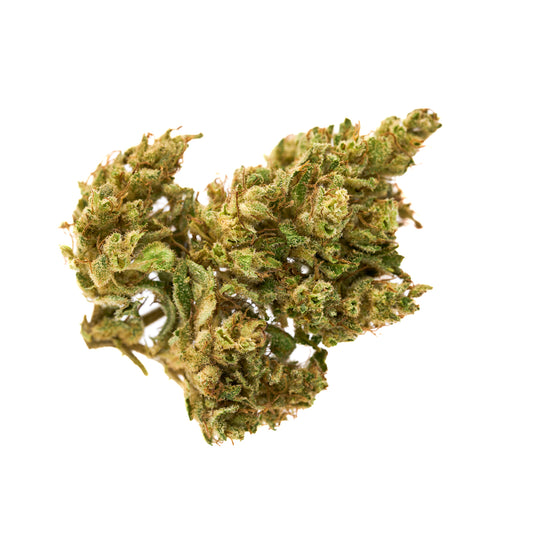
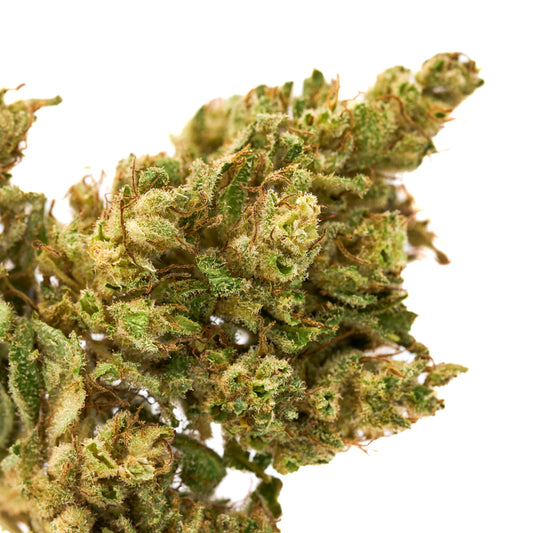
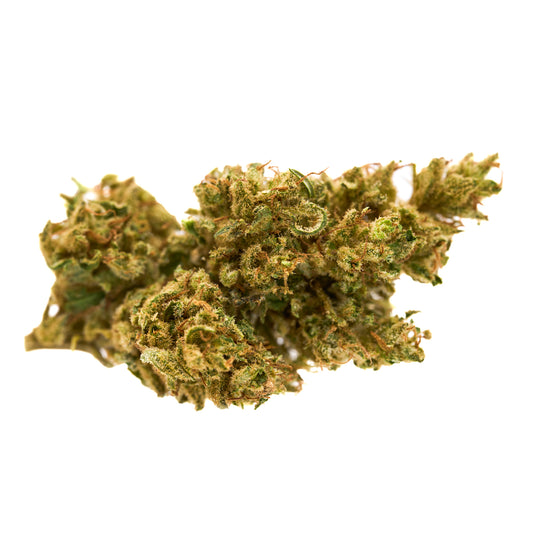

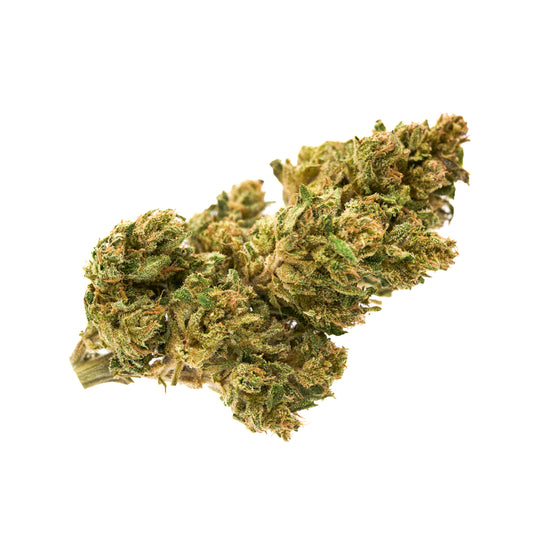




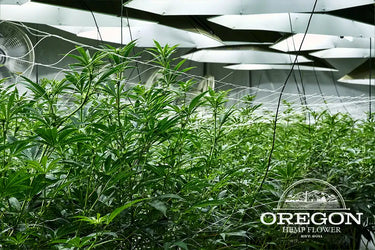

Leave a comment
Please note, comments need to be approved before they are published.